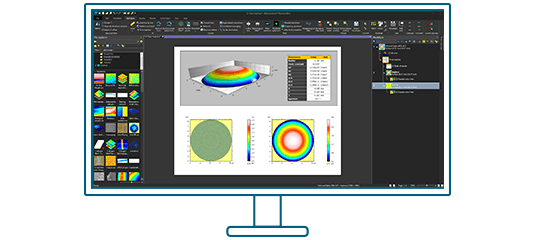Nature, the International Journal of Science, recently revealed the discovery made by an international team including scientists from the PACEA (CNRS/University of Bordeaux/French Ministry of Culture) research unit of the oldest drawing known to man.
Among the tools used to bring this unique treasure to light, SensoMap software, based on Mountains® technology helped researchers to precisely characterize surface features and confirm the drawing was indeed done intentionally.
The world’s earliest drawing is 73,000 years old
The oldest known abstract drawing, made with ochre, was found in a South African cave on a pebble retrieved from 73,000-year-old deposits. A crosshatch of nine lines purposefully traced with a piece of ochre having a fine point and used as a pencil, this work is at least 30,000 years older than the earliest previously known abstract and figurative drawings executed using the same technique.
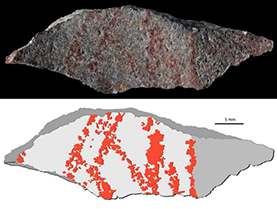
Above: This silcrete flake displays a drawing made up of nine lines traced on one of its faces with a sharp piece of ochre. © d’Errico/Henshilwood/Nature
Confirming the validity of the discovery
A major methodological challenge was to prove these lines were deliberately drawn by humans. First, researchers reproduced the drawing discovered using various techniques: they tried fragments of ochre with a point or an edge and also applied different aqueous dilutions of ochre powder using brushes.
Using techniques of microscopic, chemical, and tribological analysis, they then compared their drawings to the ancient original. Their findings confirm the lines were intentionally drawn with a pointed ochre implement on a surface first smoothed by rubbing. Both ISO parameters and SSFA analysis clearly demonstrated that the drawn surface was significantly smoother than the other parts of the flake and the other artifacts from the cave.
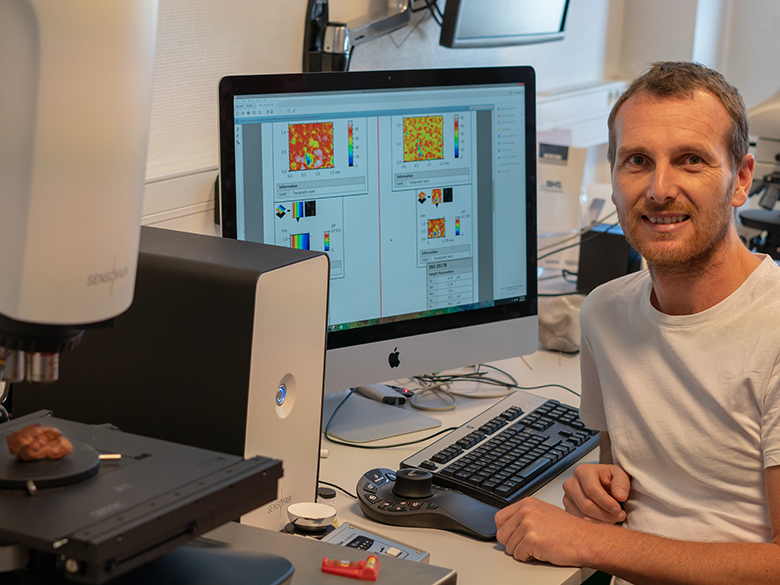
Above: Dr Alain Queffelec of the University of Bordeaux, one of the researchers involved in the groundbreaking study.
Surface analysis tools used
Among the tools used to bring this exciting new discovery to light, SensoMap software, based on Mountains® technology allowed archeologists to reveal that the pebble in question was probably originally part of a large ocher grindstone, the surface of which may have been completely covered by a drawing which the fragment discovered would have been part of.
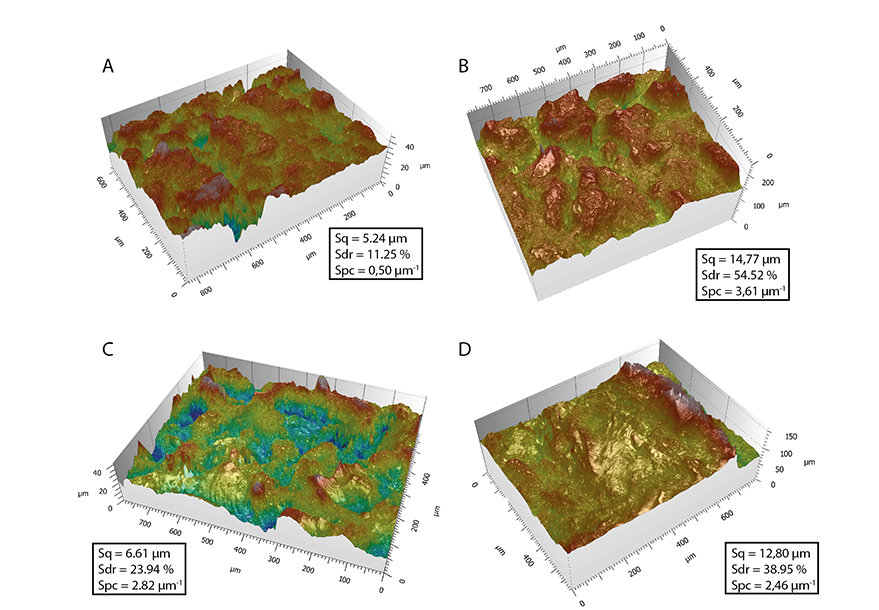
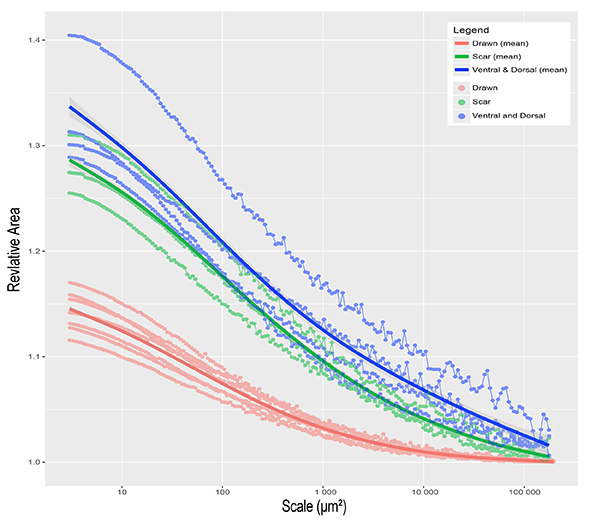
Above: Surface analysis performed using SensoMap software (ISO and SSFA parameter calculations)
Read more:
- https://www.nature.com/articles/d41586-018-06664-y
- An abstract drawing from the 73,000-year-old levels at Blombos Cave, South Africa. Christopher S. Henshilwood, Francesco d’Errico, Karen L. van Niekerk, Laure Dayet, Alain Queffelec & Luca Pollarolo. September 12th, 2018, Nature : https://doi.org/10.1038/s41586-018-0514-3
- https://www.lemonde.fr/archeologie/article/2018/09/12/un-dessin-vieux-de-73-000-ans-trouve-dans-une-grotte-sud-africaine_5354166_1650751.html
(article in French)
Watch the video: https://youtu.be/ntLBvNgDn7Y
Try it on your data by getting a free trial now:
Try Mountains® surface analysis software for free
